According to Donald Trump, “We’re also letting drugs pour through our southern border at a record clip. At a record clip. And it shouldn’t be allowed to happen.”
But the reality is somewhat different.
Rather than a record flow, the amount of drugs coming over the US border with Mexico, measured by seizures by Customs and Border Protection, has trended down over the last five years.
Marijuana seizures have declined the most, likely driven by changing regulations on the drug in the US.
The amount of cocaine seized at the US-Mexico border has also fallen, though the southern border may not be its principal entry point.
Seizures of heroin and methamphetamines have risen slightly over the past five years, a trend that reflects changing drug-consumption habits in the US.
Overall, as the charts below show, the flow of drugs into the US doesn't match what Trump said, and the dynamics of US drug use have also changed markedly over the last 15 years.
Overall drug seizures decreased between 2011 and 2015; that decline has largely been driven by the drop in marijuana seizures over that time.
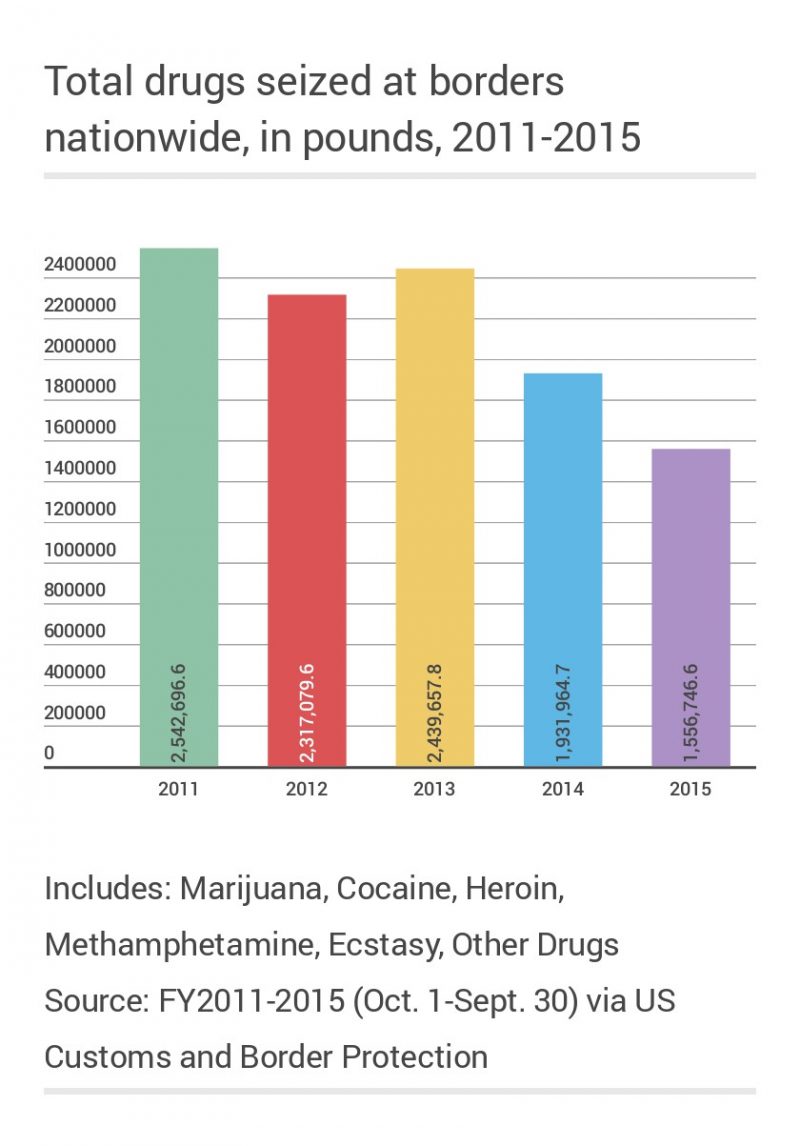
Source: The Washington Post
Marijuana seizures by weight have declined significantly since 2011.

The falling amount of marijuana intercepted at US borders "is most likely because of the legalization of marijuana for recreational or medicinal use in a growing number of American states - so Americans are buying more cannabis grown in the United States," Ioan Grillo, a journalist in Mexico who has covered the drug war extensively, wrote in The New York Times after the debate.
"Two or three years ago, a kilogram [2.2 pounds] of marijuana was worth $60 to $90," Nabor, a 24-year-old pot grower in the northwestern Mexican state of Sinaloa, told NPR at the end of 2014. "But now they're paying us $30 to $40 a kilo. It's a big difference. If the U.S. continues to legalize pot, they'll run us into the ground."
The number of marijuana seizures has also declined over the last five years.

Cocaine seizures at the southern border have declined, but larger amounts are being brought in through other routes.
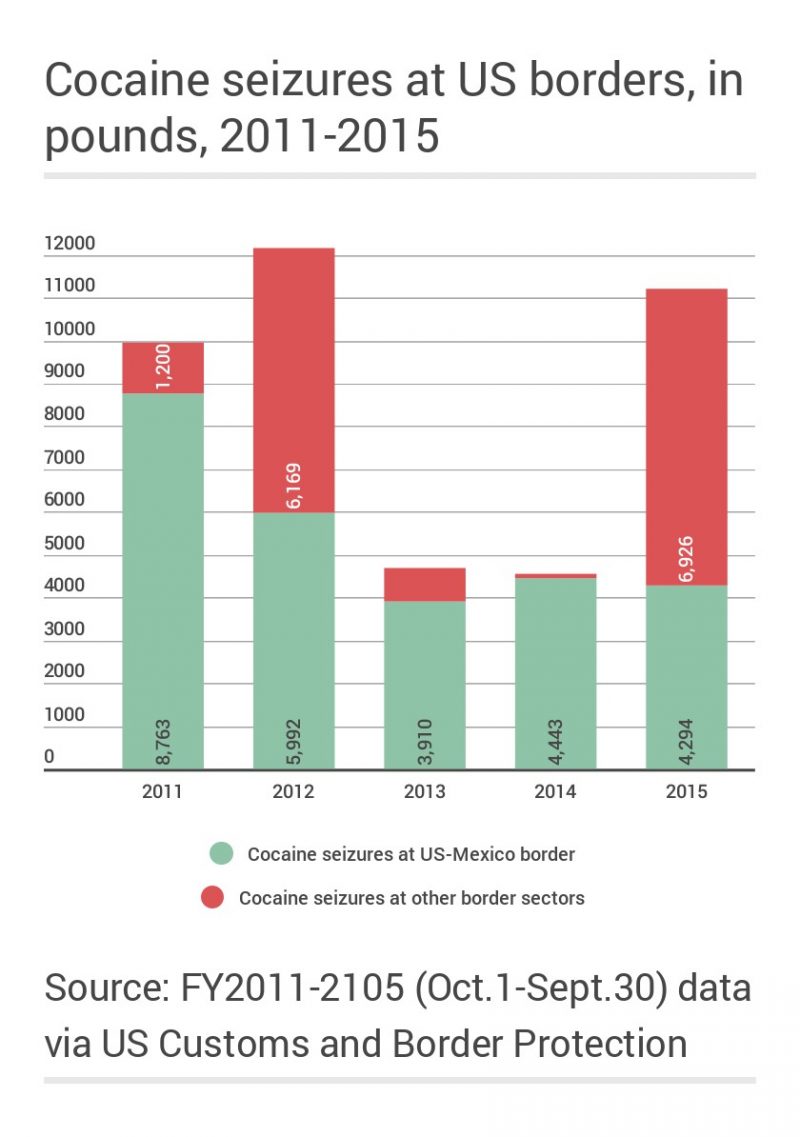
Unlike marijuana, cocaine is easier to transport clandestinely and smaller amounts of it yield large profits.
While the amount of the drug seized at the US-Mexico border has declined, other routes are viable, including sea transport. According to the US Drug Enforcement Administration, 80% of the drugs that came into the US in 2012 came via maritime routes.
The DEA also reported that 30% of the drugs smuggled into the US by sea routes were transported on narco submarines.
Heroin seizures rose after 2011, but declined in 2015.
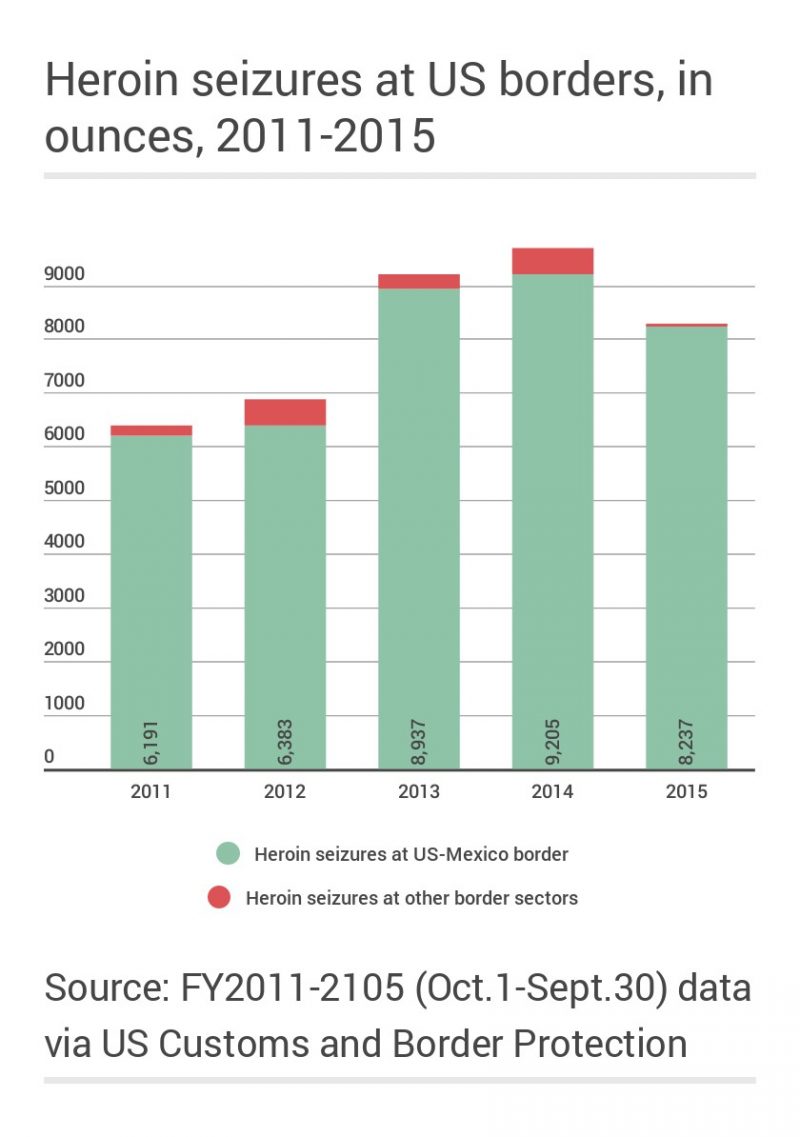
The rise and fall of heroin seizures undercuts Trump's assertion that drugs are flowing into the US at "a record clip," but the fact that seizures in 2015 were higher than in 2011 is reflective of trends in US domestic drug use, particularly the shift to heroin and synthetic drugs.
Mexico has become one of the chief sources of heroin seized inside the US, and some of Mexico's most powerful criminal organizations are jockeying to control the drug's cultivation areas and trafficking routes in the country.
Methamphetamine seizures at US border crossings have risen considerably since 2011.
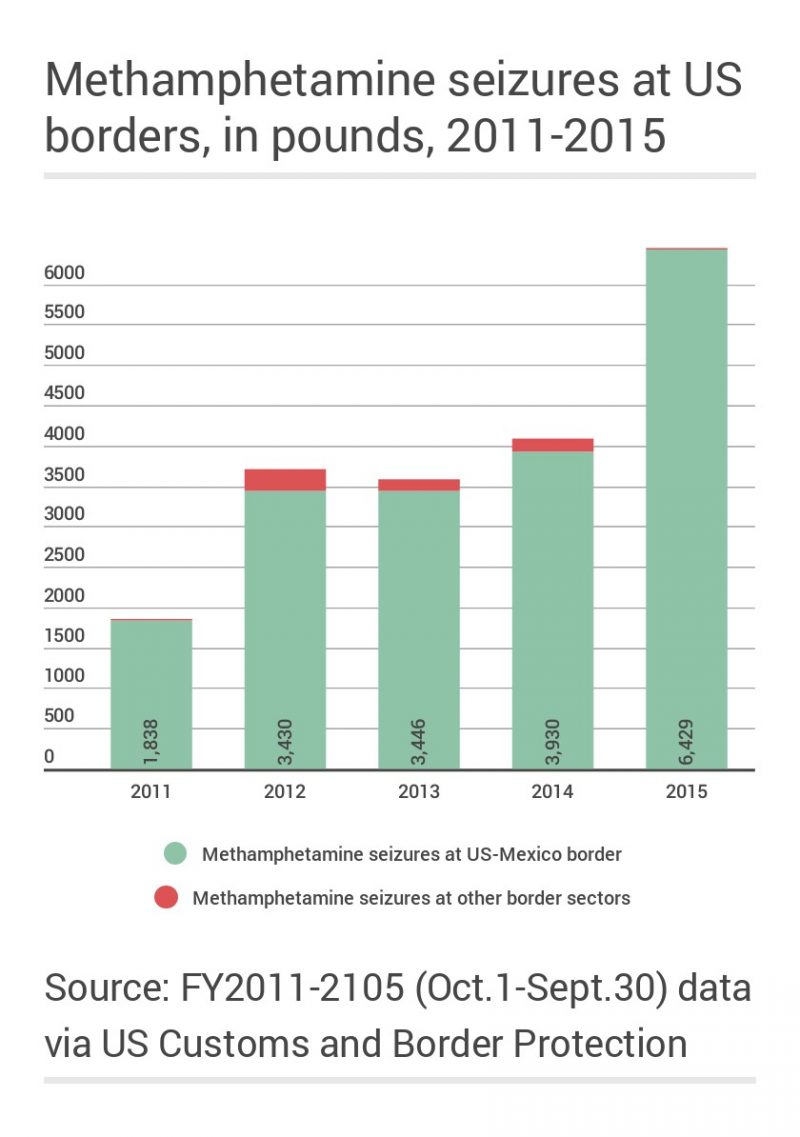
The spike in methamphetamine coming into the US over the southern border is likely a result of the rise in the drug's production in the that country.
Restrictions on sales of common ingredients for meth have helped drive down US domestic production, but Mexican traffickers picked up the slack, using compounds that are banned in the US but available in Mexico to increase the purity of the meth they produce.
The number of seizures of drugs at US borders largely reflect trends in the US, with cocaine declining slightly, heroin rising slightly, and methamphetamine growing considerably.
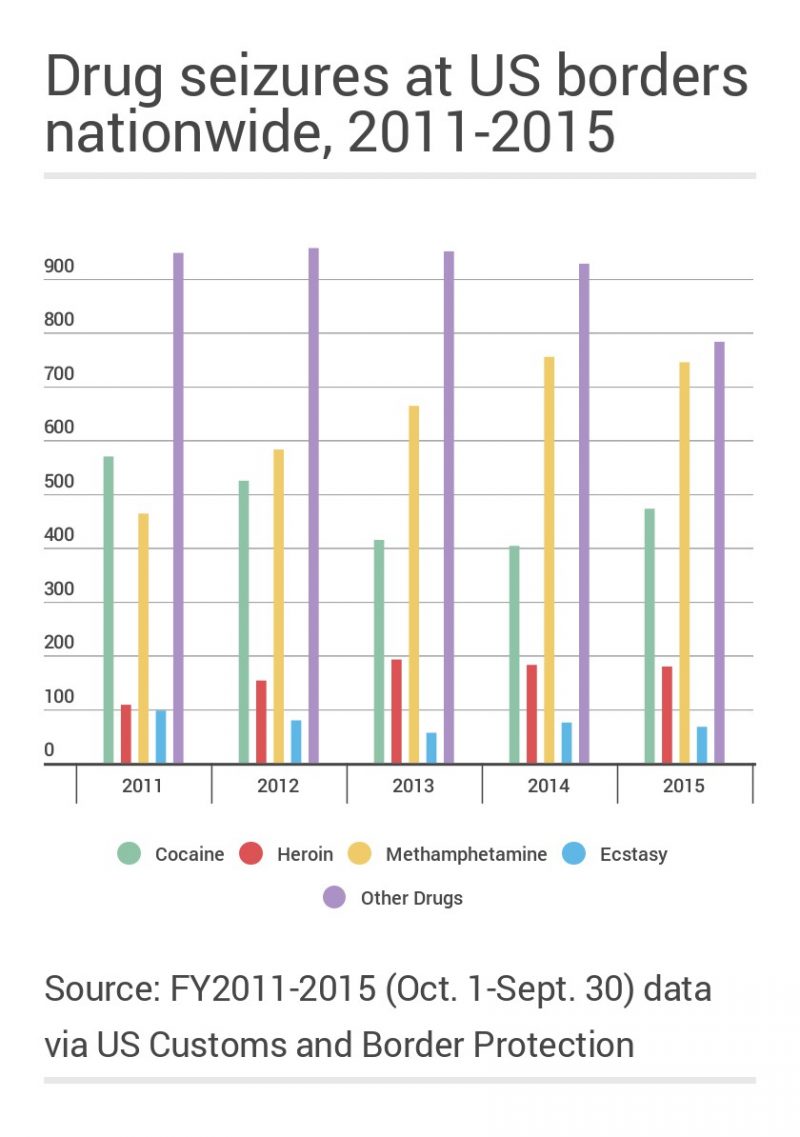
Over the last decade, marijuana consumption among Americans has risen significantly.
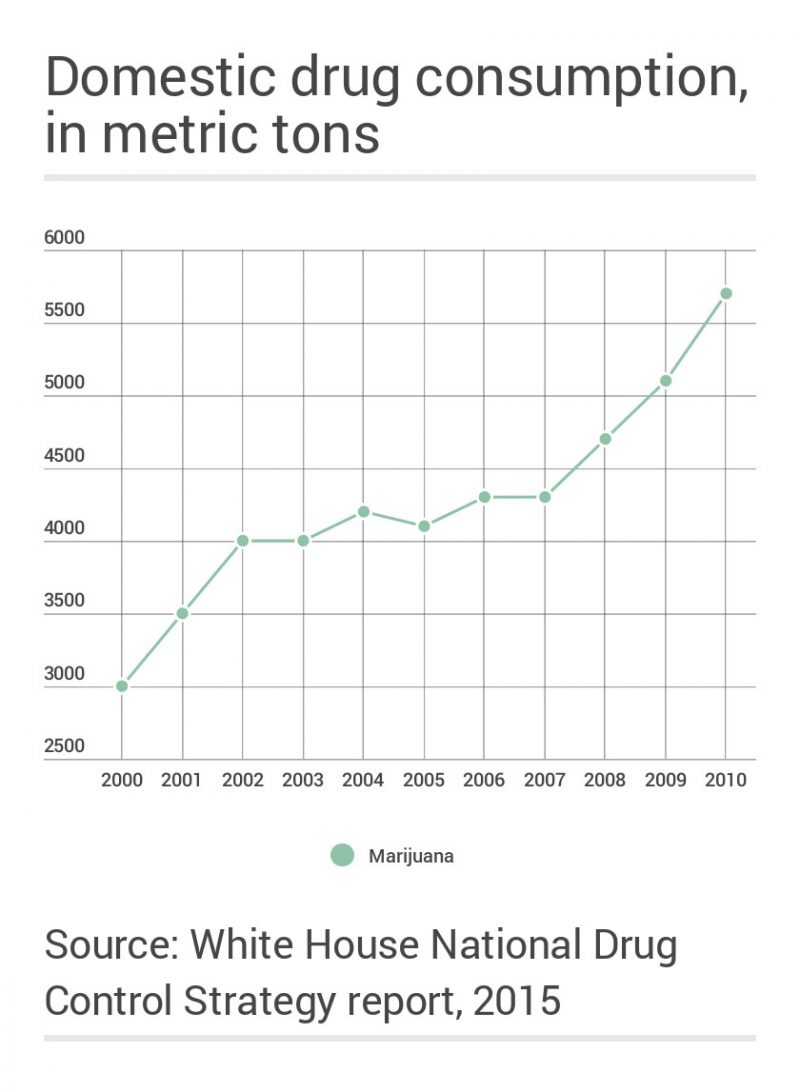
But the amount of cocaine Americans consume appears to have dropped off. Heroin use has likely risen since 2010, given the recent spike in opioid abuse in the US, as has methamphetamine use.
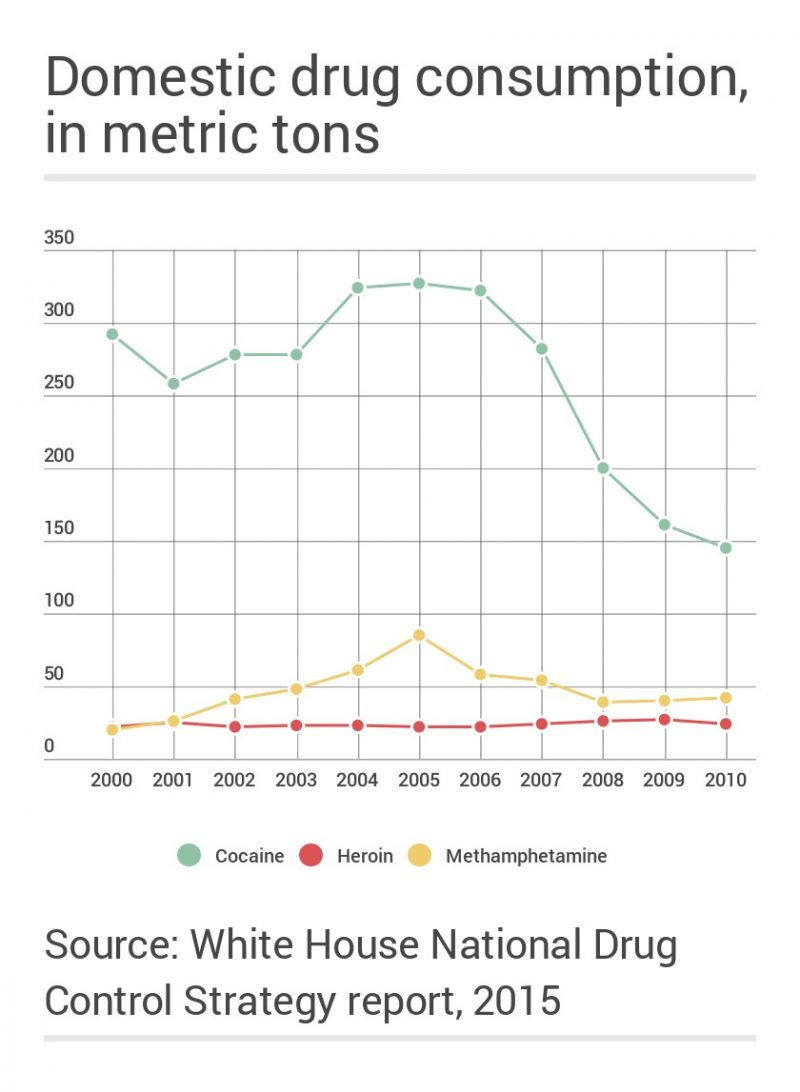
The overall number of illicit-drug users appears to have gone up, but that rise seems to be driven by an increase in marijuana use, while cocaine use has declined slightly.












